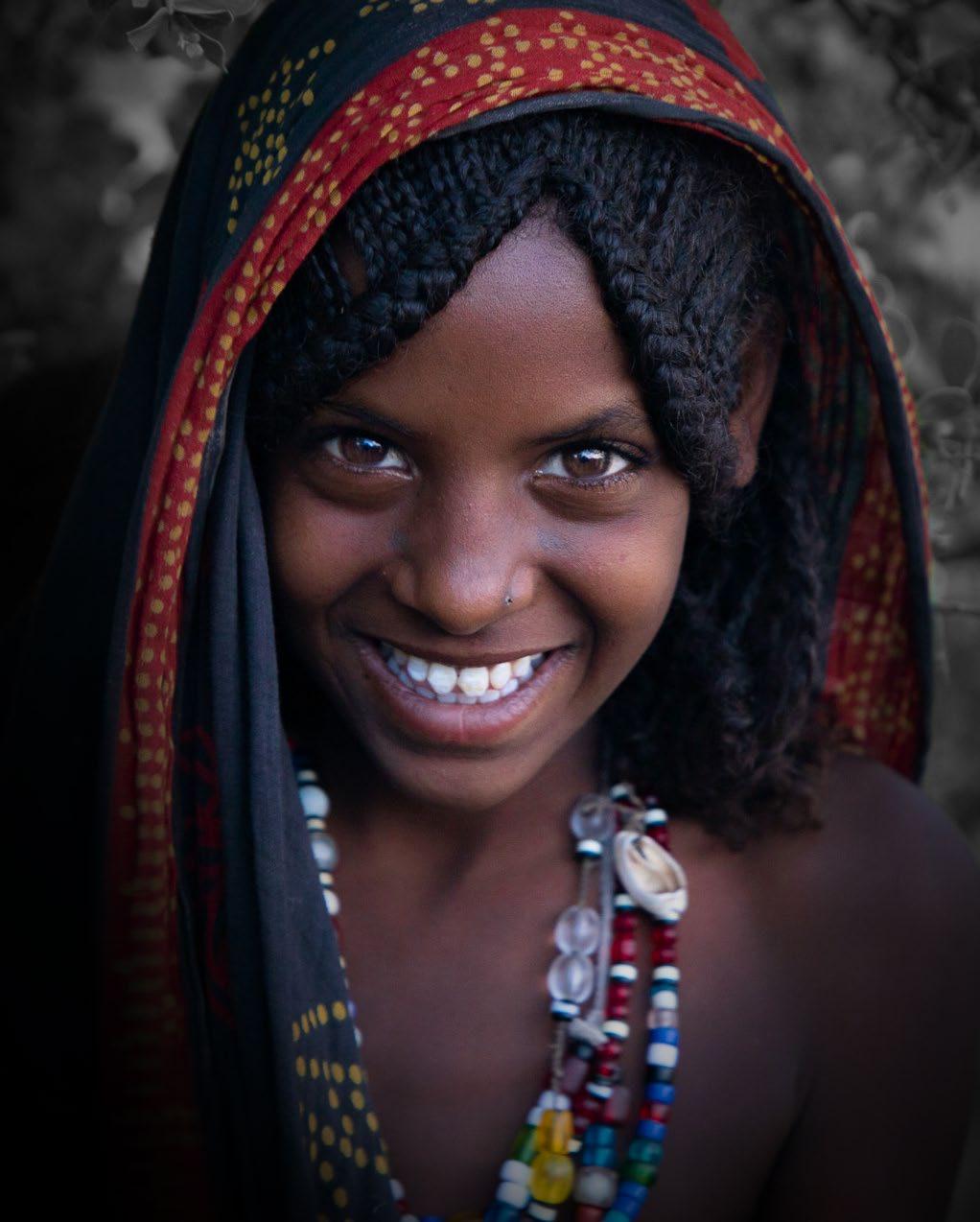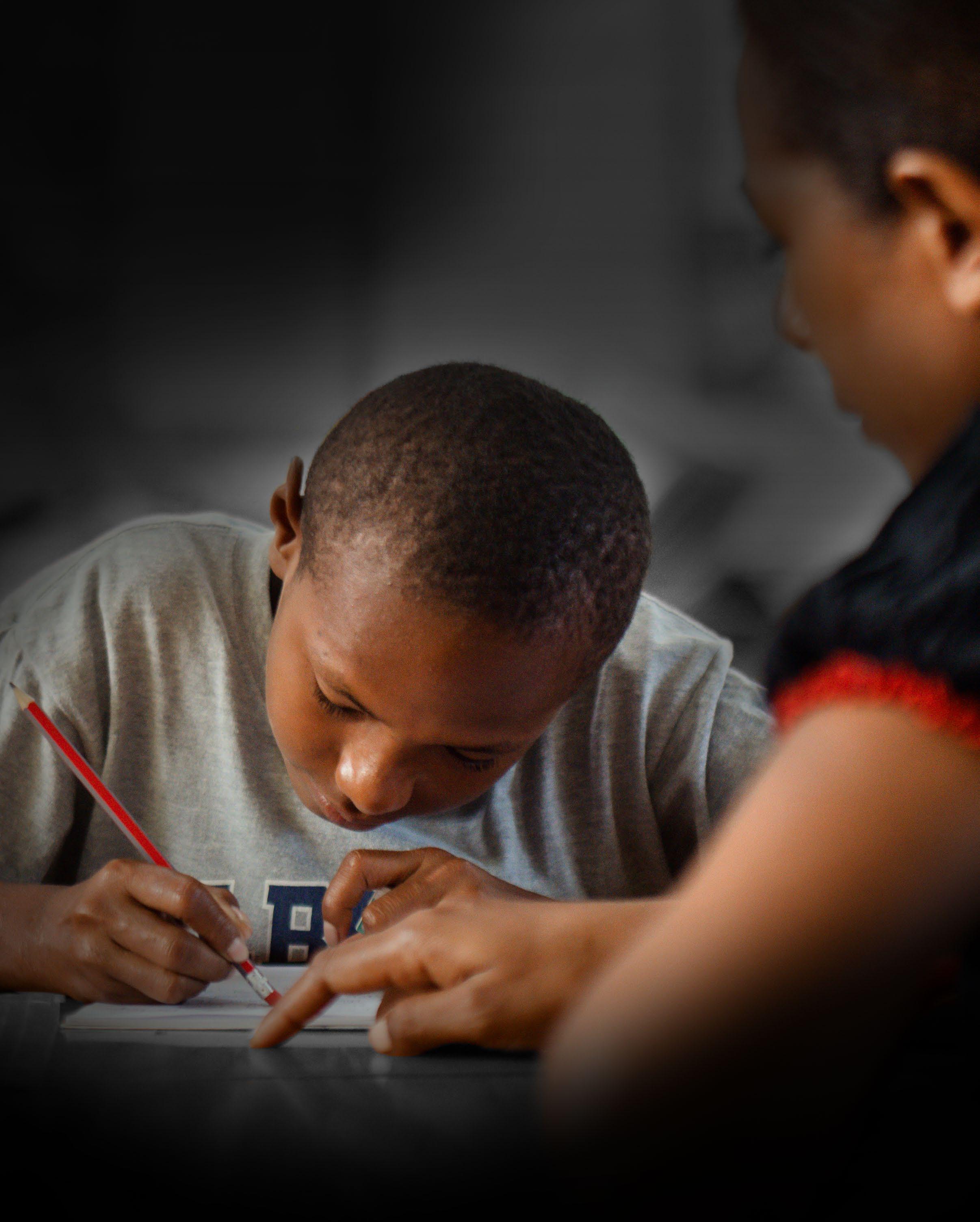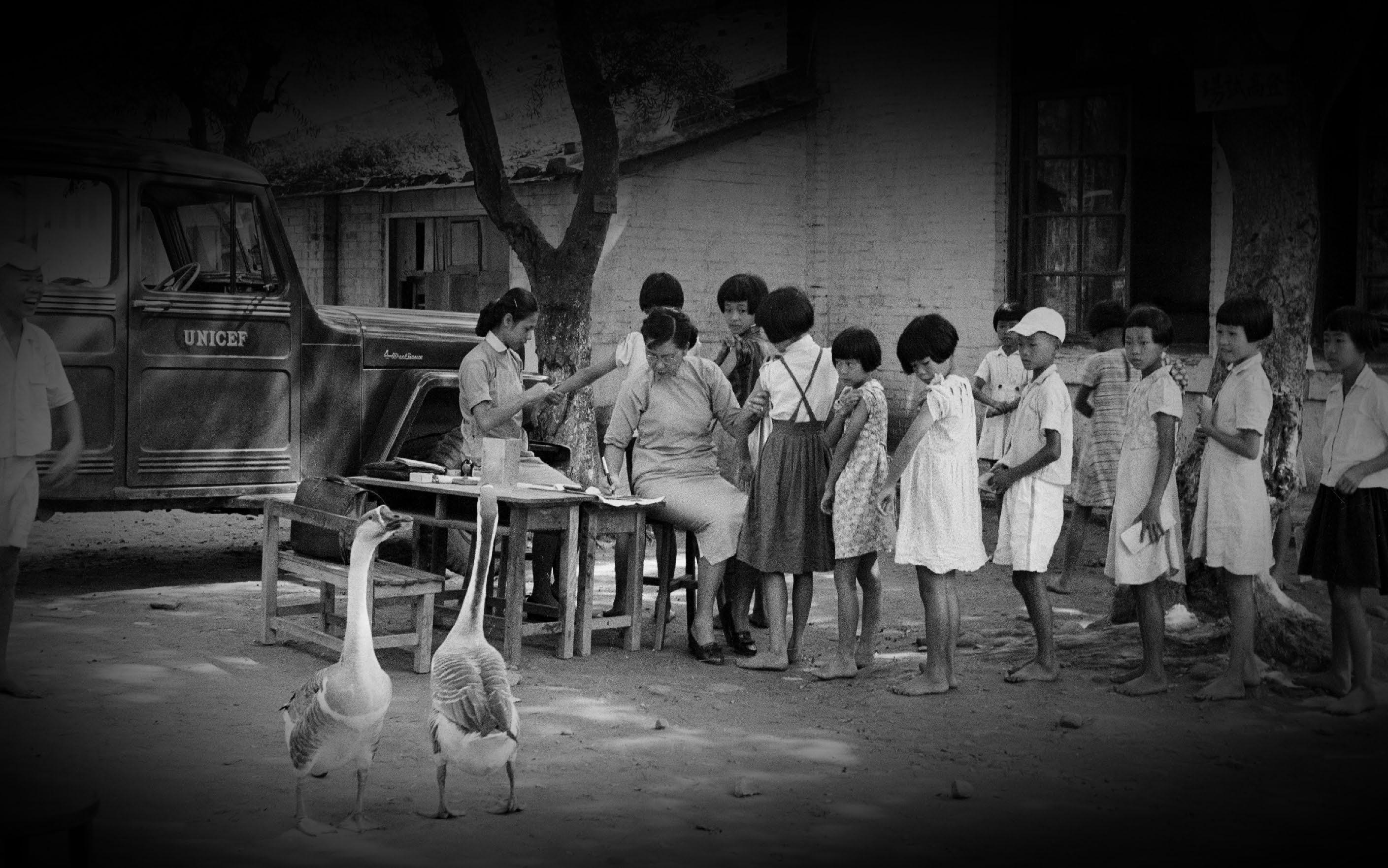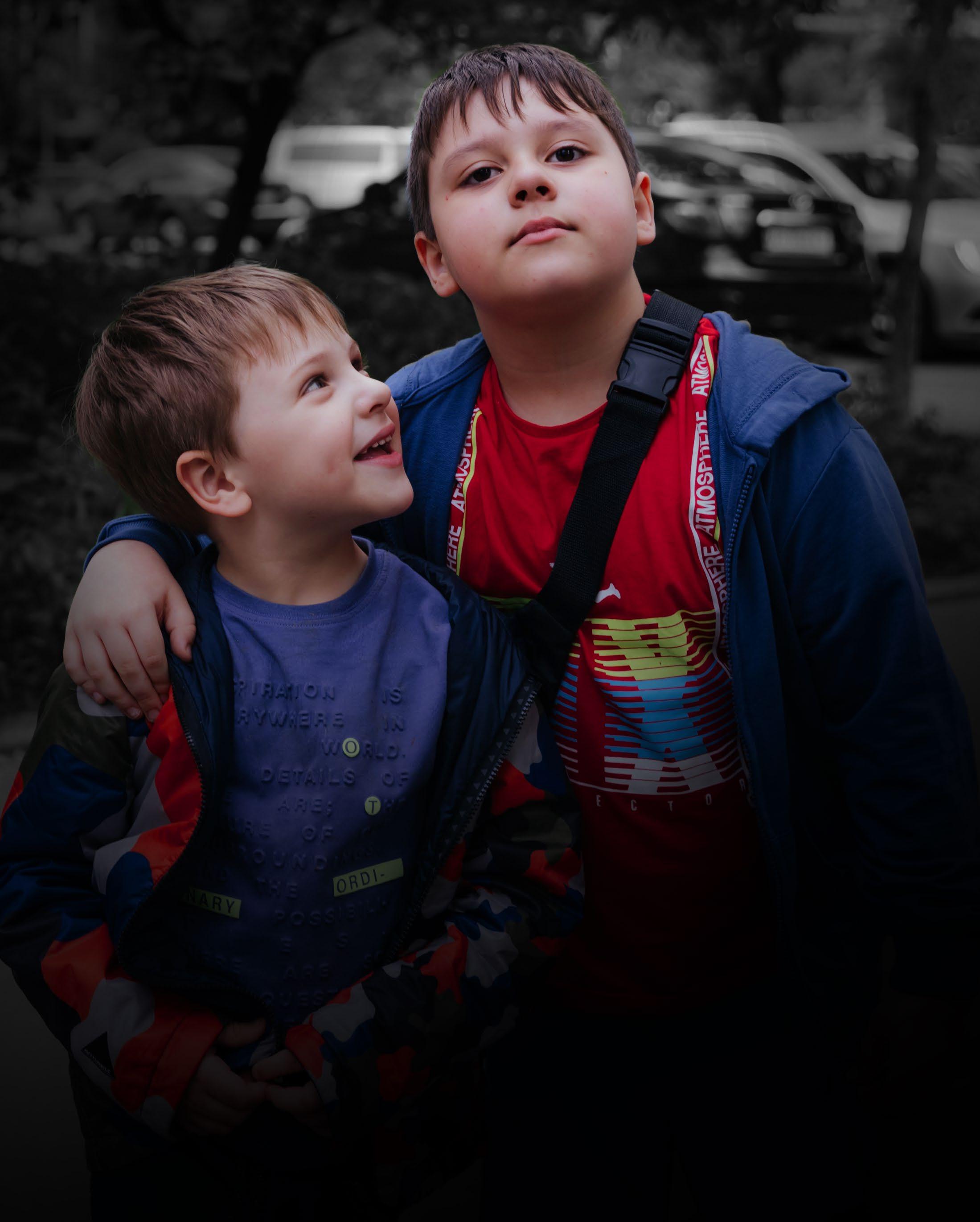2022 ANNUAL REPORT

On June 24, 2022, in Nepal’s far west, health worker Basanta Malla walks through rice paddies to provide routine vaccinations for children.
 FRONT COVER: Children playing outside in Mongo, in the Guéra region of Chad.
FRONT COVER: Children playing outside in Mongo, in the Guéra region of Chad.



On June 24, 2022, in Nepal’s far west, health worker Basanta Malla walks through rice paddies to provide routine vaccinations for children.
 FRONT COVER: Children playing outside in Mongo, in the Guéra region of Chad.
FRONT COVER: Children playing outside in Mongo, in the Guéra region of Chad.

When the headlines get bleak and bad news piles up, as happened far too often over the course of our past fiscal year, it can seem like there is no counterweight on the positive side of the scale.
My experience at UNICEF USA allows me, and those who work alongside me, to see that that’s not true.
When bad things happen, good people really do step up to help.
They donate, they fundraise, they advocate, they volunteer — individuals, whole families, corporations, foundations, governments.
Over this past fiscal year, UNICEF has dealt with multiple large-scale emergencies — the ongoing COVID-19 pandemic, repeated once-in-a-century natural disasters and, tragically, the human-caused disaster of the war in Ukraine.
These emergencies have halted progress in development work, set back educations and routine vaccinations, and raised the risk of famine in the Horn of Africa, the Sahel and in crisis zones across the world.
But in the face of it all, I’m truly inspired to see the response of UNICEF USA supporters, from longtime partners to first-timers who saw children in need and decided to become the change they sought in the world.
UNICEF USA achieved its first-ever billion-dollar fundraising year, which delivered positive impact for hundreds of millions of children. For helping to keep children healthy, educated, protected and respected, I’d like to thank each and every UNICEF USA supporter from the bottom of my full heart.

The updates in this report will show how UNICEF hasn’t stopped putting all this goodwill to good use — saving lives, reopening schools, connecting children to the internet, providing mental health services, to name just a few.
We face a big job in the years ahead. But when the cause of children brings us together, we are unstoppable.
Michael J. Nyenhuis President and CEO, UNICEF USAIn the drought-plagued Afar region of northeastern Ethiopia, UNICEF is working to ensure that young girls like Aicha, 11, have a future.

In 2021, UNICEF continued its work around the world to save children’s lives and protect their health. In mounting an unprecedented response to COVID-19 (including delivering 1.55 billion vaccine doses to 145 countries by June 2022), UNICEF learned much about the fragility of the world’s health care systems — and their critical importance in preventing future pandemics. That’s why UNICEF is working harder than ever to strengthen health systems close to where children live — one of the most effective ways to transform children’s lives at scale and ensure that every child is healthy.
This means training and equipping frontline professionals and community health workers like Ishrat Amanat, a midwife in Maraka Village, Pakistan, which has no local health facility. After receiving UNICEF’s specialized community midwife training, Amanat opened a clinic in her home to reduce the suffering and deaths of mothers and newborns. “When I deliver a healthy baby for a healthy mother, I’m excited to know that I have kept two people safe and healthy with my skills,” says Amanat.

It also means investing in the facilities and basic infrastructure on which children’s access to lifesaving health services, safe water and sanitation depend. In Kwami, Gombe State, Nigeria, UNICEF and other partners have worked together to improve 10 primary health care centers to better serve children and families. Dr. Abdulrahman Shuaibu, Executive Secretary of the Gombe State Primary Health Care Development Agency, described the change. “First, our infrastructure was in a poor state, with leaking roofs, lack of water supply, and no power. If you saw this facility just six months ago, and then compare it to what we have now, you will see the massive upgrade. We have regular water supply now. There is a borehole. And there are solar power channels that provide 24-hour power supply across the facility.”
This was one of more than 4,300 similar WASH projects, improving access to safe water, sanitation and hygiene in health care facilities across 70 countries globally.
Through a continued commitment to better primary health care, UNICEF and its partners are building the resilient health systems of the future that will help protect children from the next pandemic, and ensure that they not only survive, but thrive.
Prior to the COVID-19 pandemic, the share of 10-year-olds unable to read and understand a simple story was estimated at 57 percent in low- and middle-income countries. But with hundreds of millions of children cut off from education during the pandemic, learning poverty has been driven much higher — threatening children’s futures and the future of their communities and putting as many as 10 million girls at risk of not returning to school.
In 2021, UNICEF helped hundreds of millions of out-of-school children — including children on the move — continue their education through community-based schools, in-person and remote learning support, and other programs. UNICEF and partners launched the Myanmar Curriculum Pilot in November 2021to ensure that Rohingya refugee children living in the Cox’s Bazar refugee camps in Bangladesh receive the education they deserve. Based on the national curriculum of their home country, the pilot provides Rohingya children with formal, standardized education to prepare them for their eventual return to Myanmar. So far, 10,000 children have been enrolled. This is in addition to the 300,000 children attending one of the camps’ 3,400 learning centers, 2,800 of which are supported by UNICEF.
Because disabilities often prevent children from getting the education they deserve, teacher training provided by UNICEF is helping to make inclusive education a reality. After school closures during COVID-19 lockdowns exacerbated 12-year-old Leraien’s struggles to keep up with his peers, he was referred to Markham Road Primary School, one of four schools in Morobe Province, Papua New Guinea, with teachers trained to offer individualized learning in inclusive mainstream classrooms. There, staff confirmed Leraien’s hearing impairment and difficulties in reading, fluency and comprehension. Since joining the Morobe Inclusive Resource Center within the school, Leraien has made important strides. “I like going to school at the Resource Center now because my teacher helps me a lot and I have new friends there,” Leraien says.
UNICEF also made strides in expanding children’s opportunities to continue learning from home — or access remote learning during school closures. As a partner in The Giga Initiative, UNICEF is working to connect every school to the internet and provide millions of learners with free access to online educational content. Since its launch in 2019, Giga has connected more than one million students and teachers in more than 3,200 schools in Africa, Central Asia, Latin America and the eastern Caribbean — and expects to connect an additional 20,000 schools by the end of 2023.


Released with the help of some visionary producers and marking UNICEF’s 75th anniversary, If You Have, a documentary by Academy Award-winning director Ben Proudfoot, shares iconic moments in the U.N. agency’s history — and makes a convincing case for why UNICEF is more critical than ever.
WATCH IT HERE.
 Children at a rural school in Taiwan line up for vaccinations against tuberculosis in 1954.
Children at a rural school in Taiwan line up for vaccinations against tuberculosis in 1954.
UNICEF works to protect the record 36 million children driven from their homes by conflict, disaster or poverty so they don’t lose the childhoods they deserve. The war in Ukraine has forced millions of families to flee — causing one of the fastest large-scale displacements of children since World War II.
As part of UNICEF’s robust, large-scale response, the UNICEF USA Bridge Fund took action within weeks of the war’s outbreak to fast track $15.2 million to help those in immediate need of safe water, health care and protection. Three months later, the Bridge Fund accelerated $3.9 million for child protection and social protection efforts, including the establishment of Blue Dot child-friendly spaces in partnership with the United Nations High Commissioner for Refugees. For children fleeing the fighting and shelling, Blue Dot centers located at major points of refugee arrivals were able to provide safe, welcoming spaces, where families could receive support and protective services.
UNICEF, together with Ukraine’s Ministry of Social Policy, also distributed cash assistance to more than 24,000 families and 76,000 children by the end of June. The cash grants allowed families like Khrystyna’s (last name withheld) to buy everyday essentials, such as food and medicine. The war stripped her, her husband and their two young sons of everything, including their home in Mariupol. “We received cash assistance, and it was an invaluable help in our dire situation,” says Khrystyna. “It helped us to pay a partial sum towards our rent in Kyiv. We bought fruit, some clothes and books.” Most importantly, the grant enabled them to afford treatment for their son with mobility problems.
Disasters fueled by climate change are also putting millions of children at risk, not only of deprivation but also abuse and exploitation. That’s why UNICEF is working with communities around the world to develop and roll out plans to better protect children in the wake of emergencies. For example, devastating drought in southern Madagascar leading to widespread food insecurity has hit women and children particularly hard, reducing opportunities for women to earn a living, causing more children to drop out of school, and putting many in positions that greatly increase their risk of experiencing violence, sexual exploitation and abuse. In response, UNICEF and partners in 2021 trained more than 300 humanitarian and government personnel on how best to protect against and respond to incidents of violence and abuse. This was part of a larger UNICEF response, where 13.9 million women and children globally benefited from programs to reduce the risk of gender-based violence.

Young people deserve more than care and protection. They also deserve to be informed and have a voice when it comes to policies and actions that affect their current and future lives. That’s why UNICEF not only advocates on behalf of young people, but also works to empower them to participate in decision-making in their communities.

Adolescents and youths in Burkina Faso – a country with one of the youngest populations in the world – reported that their views are rarely considered when it comes to local and national decision-making. In response, UNICEF and partners provided support to a youth-led road show called “Caravan Faso Jeunes.” The caravan brought together young people, media, artists and authorities to amplify youth voices, better inform them about issues impacting their lives, co-create solutions and increase dialogue between youth and local community leaders. The caravan helped to elevate youth issues across the country, reaching more than 2.5 million people.
Empowering adolescents and youths to take a role in preparing for and responding to the impacts of climate change is another important way that UNICEF is working to raise children’s voices. In Maldives, which has the lowest terrain of any country in the world, schools and health centers close to shorelines are at risk of destruction, imperiling children’s education, health and nutrition. “When there are floods, we take our shoes and socks off and put them in our school bags,” says Fathimath, 15, whose school sits on a small island about a 45-minute boat ride from Male, the capital of Maldives. “We have to wade through the water to our classrooms.”
In response, UNICEF Maldives and the government hosted an event in 2021 to give adolescents and young people a voice in policy development. UNICEF is leveraging its UPSHIFT methodology to help young people build skills and engage with civic stakeholders around climate change responses for their communities. This ensures that policies, plans and systems are child-sensitive and reflect the situation as seen and felt by young people. “I know there’s a solution to this. We don’t have to lose hope,” Fathimath says. “We can all help our community solve this problem.”
UNICEF USA also continues to support and amplify the voices of children and young people in the United States. In May 2022, UNICEF USA National Youth Council Member Carmel Alshaibi attended the first-ever Mental Health Youth Action Forum at the White House. Carmel, one of 30 talented youth advocates chosen to participate, spent the day sharing her mental health journey on a panel alongside First Lady Dr. Jill Biden and U.S. Surgeon General Dr. Vivek Murthy, advocating for expanded access to quality mental health services for children and youths in the U.S.
 Health worker Anisa Hassan Mahmoud at Shibis Health Centre, in Mogadishu, where UNICEF helps address urgent health needs of Somali women and children.
Health worker Anisa Hassan Mahmoud at Shibis Health Centre, in Mogadishu, where UNICEF helps address urgent health needs of Somali women and children.
UNICEF USA exists to relentlessly pursue a more equitable world for every child. To ensure that we successfully deliver on this important mission, we continuously monitor the effectiveness, efficiency and overall financial health of our organization.

UNICEF USA is committed to abiding by the principles of the Sarbanes-Oxley Act, as they apply to not-for-profit corporations, and to using strong internal controls and reporting methods that emphasize documentation, implementation, review and approval. As a result, we have maintained the highest level of ethical, business and financial practices, enabling UNICEF USA to remain financially sound and sustainable.
The financial summary on pages 22–23 highlights our financial statements, which KPMG LLP has audited. A complete set of our financial statements, including the related notes with auditor’s unqualified opinion, is available upon request and can also be found on our website.
At the direction of the Audit Committee of our board of directors, UNICEF USA’s management has continued to enhance robust controls that emphasize compliance, accountability and information technology systems data security and reliability to minimize risks that could impact the internal control systems of the organization.
UNICEF USA is also compliant with the Payment Card Industry (PCI) standards as well as Federal Form 990 and Pension Plan 403(b) Form 5500 audit requirements.
We believe our internal controls provide a reasonable assurance that our financial reports and statements are reliable and that they comply with generally accepted accounting principles.
Michael J. Nyenhuis President and CEO, UNICEF USA
$ 914,127,226
Through its Office of Public Policy and Advocacy in Washington, D.C., UNICEF USA acts as an advocate for the well-being of the world’s children. One of the specific functions of the Office of Public Policy and Advocacy is to advise both the administration and Congress about the importance of the voluntary contributions made to UNICEF by the U.S. government. UNICEF USA’s efforts in this regard helped to persuade Congress to direct the U.S. government to allocate $134 million to UNICEF in 2022. This funding is provided directly by the U.S. government to UNICEF and is not reflected as revenue in UNICEF USA’s Consolidated Statement of Activities. Related expenses, however, are included in UNICEF USA’s total program services.
As of June 30, 2022, UNICEF USA has total net assets of $247 million that consist of:



Without donor restrictions $101,966,375
With donor restrictions $145,054,777
Total net assets $247,021,152




Without Donor Restrictions — Net assets that are not subject to donor-imposed restrictions.


With Donor Restrictions — Net assets that are subject to donor-imposed stipulations that will be met either by the actions of UNICEF USA and/ or by the passage of time. Such net assets may also be subject to donor-imposed restrictions that stipulate that they be maintained permanently by UNICEF USA but permit the organization to




expend all or part of the income derived from these assets to support operations. Included in the net assets with donor restrictions is UNICEF USA’s endowment consisting of individual donorrestricted funds of $4.2 million. Net assets with donor restrictions will be used to fund various programs, such as child protection and child survival, including nutrition and health, emergency response and various other programs.
This summary was prepared by UNICEF USA from its consolidated financial statements, which were audited by KPMG LLP. The complete consolidated financial statements, including the related notes and auditor’s report, are available upon request or on UNICEF USA’s website at unicefusa.org
SUMMARY OF UNICEF USA’S SOURCES OF SUPPORT AND HOW WE DISTRIBUTE OUR PROGRAM ASSISTANCE
On
The National Board has the primary and ultimate governance and fiduciary responsibility for UNICEF USA, including, but not limited to, establishing strategic direction, ensuring adequate resourcing, promoting values-led and ethical behavior, and providing proactive oversight to maximize results for children. Names shown here reflect board membership during the fiscal year covered by this report.
CHAIR
Ewout Steenbergen
VICE-CHAIR
Bernard Taylor, Sr.
PRESIDENT AND CEO
Michael J. Nyenhuis
SECRETARY
Mindy Grossman
ASSISTANT SECRETARIES
Jessica Leinwand
Michele Walsh
TREASURER
Robert T. Brown
ASSISTANT TREASURERS

Michael Klompus
Jessica Leinwand
DIRECTORS
Glen Baptist
Robert T. Brown
Gary M. Cohen
Dolores Rice Gahan, D.O.
Philippe Gilbert
Nicole Giles
Mindy Grossman
Hilary Gumbel
Carol J. Hamilton
Andrew Hohns, Ph.D.
Téa Leoni
Aaron Mitchell
Dikembe Mutombo
Michael J. Nyenhuis
John O’Farrell
David M. Sable
Henry S. Schleiff
Shahriar Shahida
Elizabeth Smith
Ewout Steenbergen
Bernard Taylor, Sr.
Brannigan C. Thompson
Janet E. Truncale
Sherrie Rollins Westin
Kelly Wilson

Organized under the laws of New York State as a not-for-profit corporation, the U.S. Fund for UNICEF (also doing business as UNICEF USA) is exempt from tax under Section 501(c)(3) of the Internal Revenue Code and is governed by an independent and nonsalaried board of directors. UNICEF USA qualifies for the maximum charitable contribution deduction by donors. A summary of activities and financial highlights for the fiscal year ending June 30, 2021, is described in this report. For more than eight decades, the United Nations Children’s Fund (UNICEF) has built an unprecedented global support system for the world’s children. UNICEF relentlessly works day in and day out to deliver the essentials that give every child an equitable chance in life: health care and immunizations, safe water and sanitation, nutrition, education, emergency relief and more. UNICEF USA advances the global mission of UNICEF by rallying the American public to support the world’s most vulnerable children. Together, we have helped save and meaningfully improve more children’s lives than any other humanitarian organization.
Photographs — Front cover: © UNICEF/UN0712033/Dejongh; inside cover/page 1: © UNICEF/UN0666560; page 2: © UNICEF/UN0777417/Vishwanathan; page 4: © UNICEF/UN0594659/Dejongh; page 7: © UNICEF/UN0735171/Pouget; page 8: © UNICEF/UN0270357/van Oorsouw; page 10: © UNICEF/UN0638441; page 12: © UNICEF/UN0667784/Bundzilo; page 14: © UNICEF/UN0543221/Faheem; page 17: © UNICEF/UN0772746/Izquierdo; page 20: © UNICEF/UN0757903/Filipo; back cover: © UNICEF/UN0668976/Mulala
Infographic © 5W Infographics © 2023
